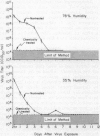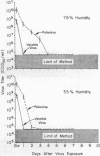Abstract
Eight compounds were tested in vitro for virucidal and antiviral activity against poliovirus and vaccinia virus. These compounds included five quaternary ammonium salts, two bromosalicylanilides, and neomycin sulfate, an antibiotic. None of the compounds was active against poliovirus, but virucidal activity was demonstrated against vaccinia virus with three of the quarternary ammonium compounds: n-alkyl (C14, C12, C16) dimethyl benzyl ammonium chloride, di-isobutyl cresoxy ethoxy ethyl dimethyl benzyl ammonium chloride monohydrate, and n-alkyl (60% C14, 30% C16, 5% C12, 5% C18) dimethyl benzyl ammonium chlorides plus n-alkyl (50% C12, 30% C14, 17% C16, 3% C18) dimethyl ethylbenzyl ammonium chlorides. Wool blanketing, wool gabardine, and cotton sheeting materials were impregnated with the first of the above virucidal compounds, and the persistence of vaccinia virus on these fabrics was compared with the persistence of the agent on nonimpregnated fabrics of the same type held at 25 C in 35 and 78% relative humidity. No virus could be recovered from the chemically treated fabrics at any time after virus exposure, whereas the virus persisted as long as 4 weeks on nonimpregnated materials. Viable vaccinia virus was also found to persist less than 1 day on a cotton fabric finished with a wash-and-wear modified triazone resin. Poliovirus persisted less than 5 days on this wash-and-wear fabric.
Full text
PDF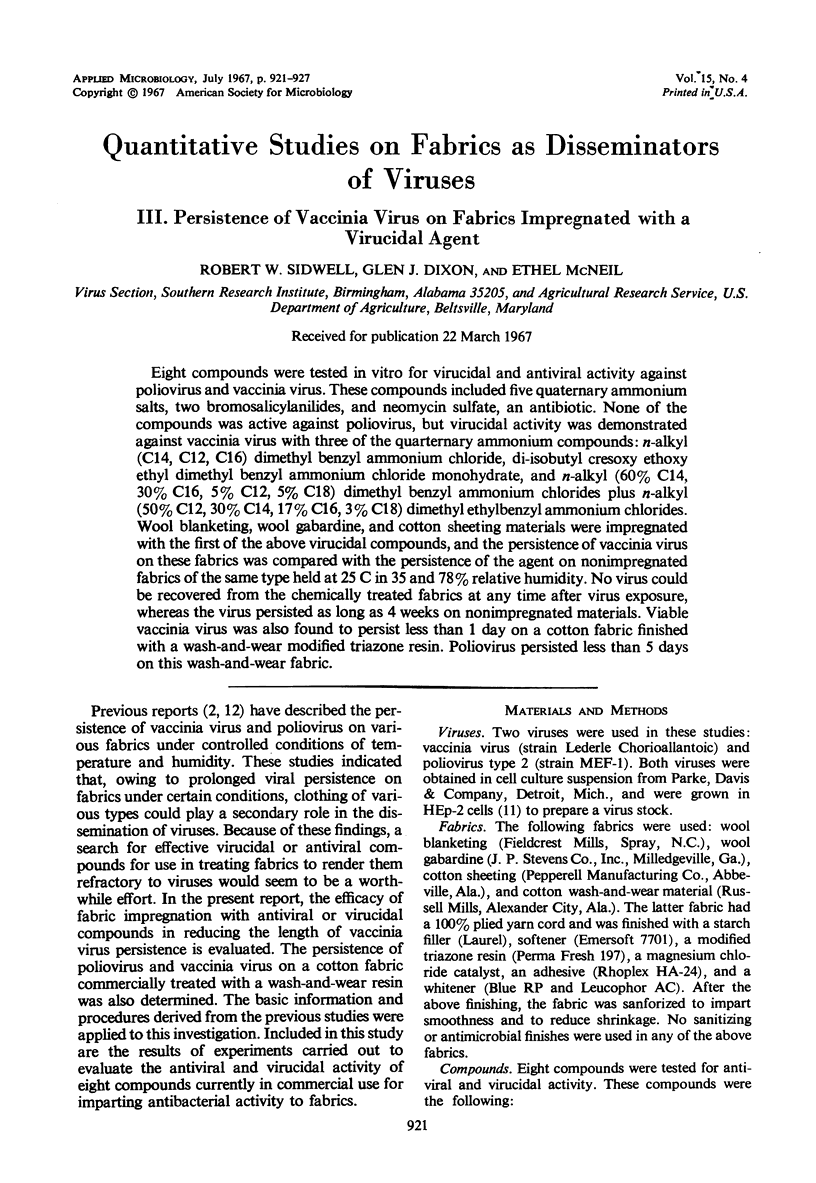
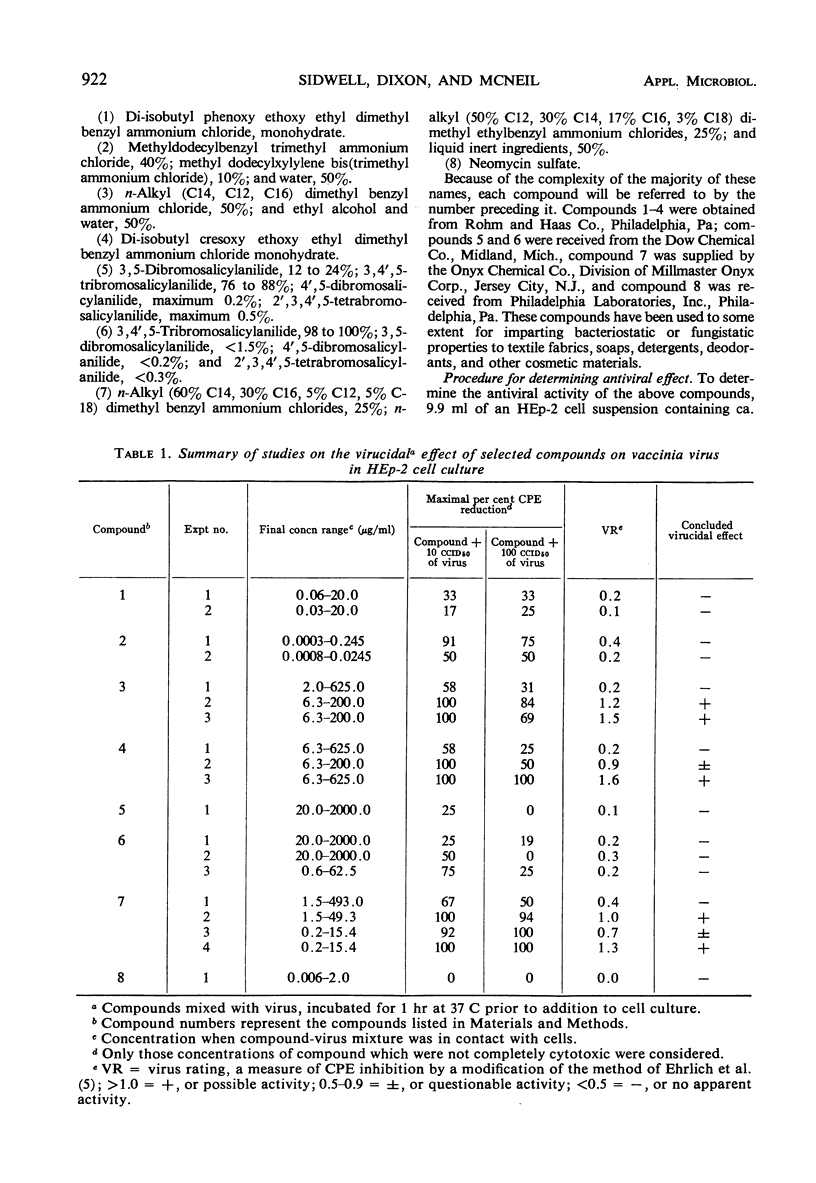
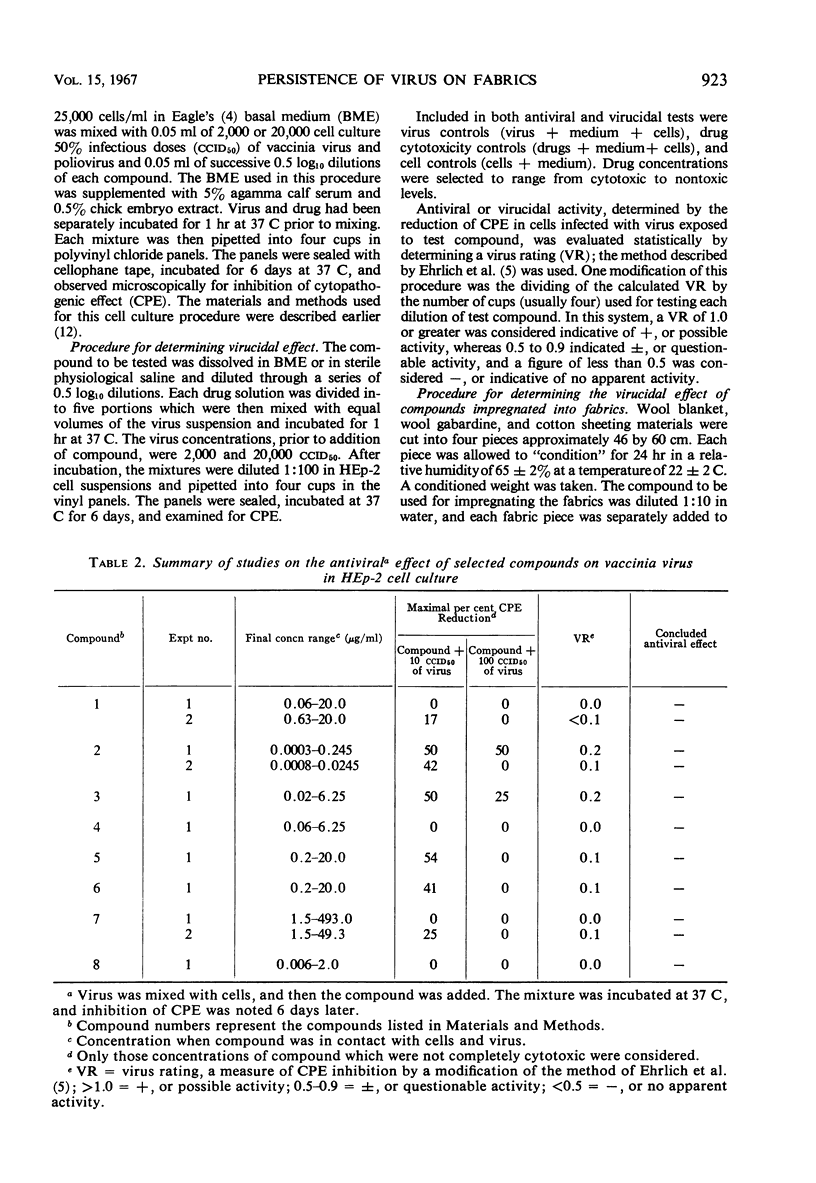

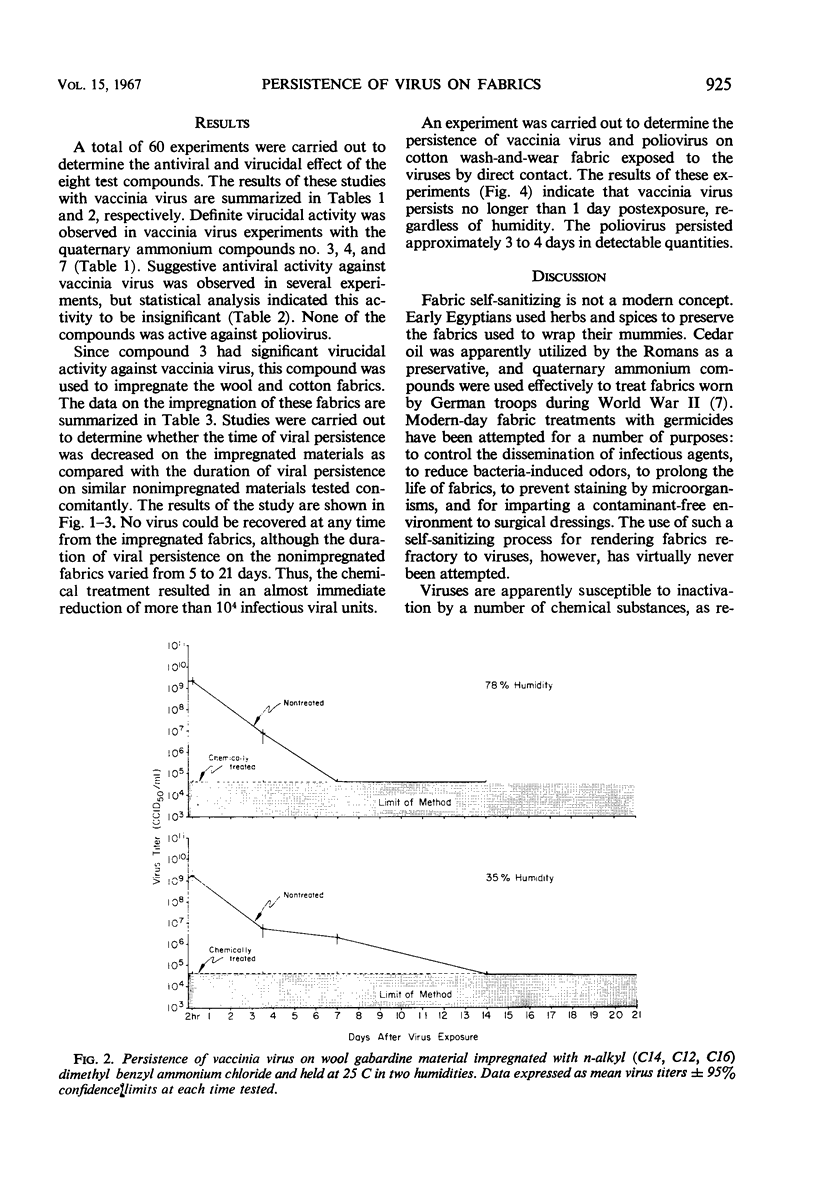
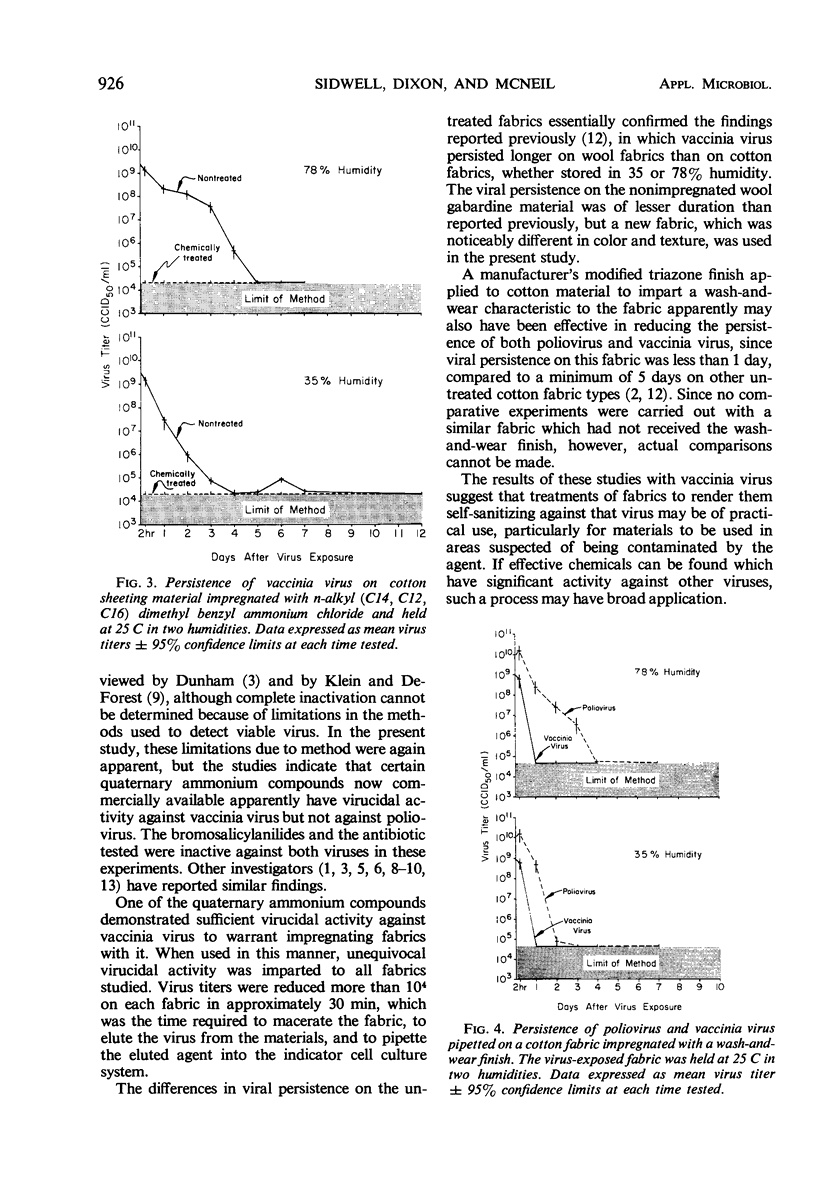
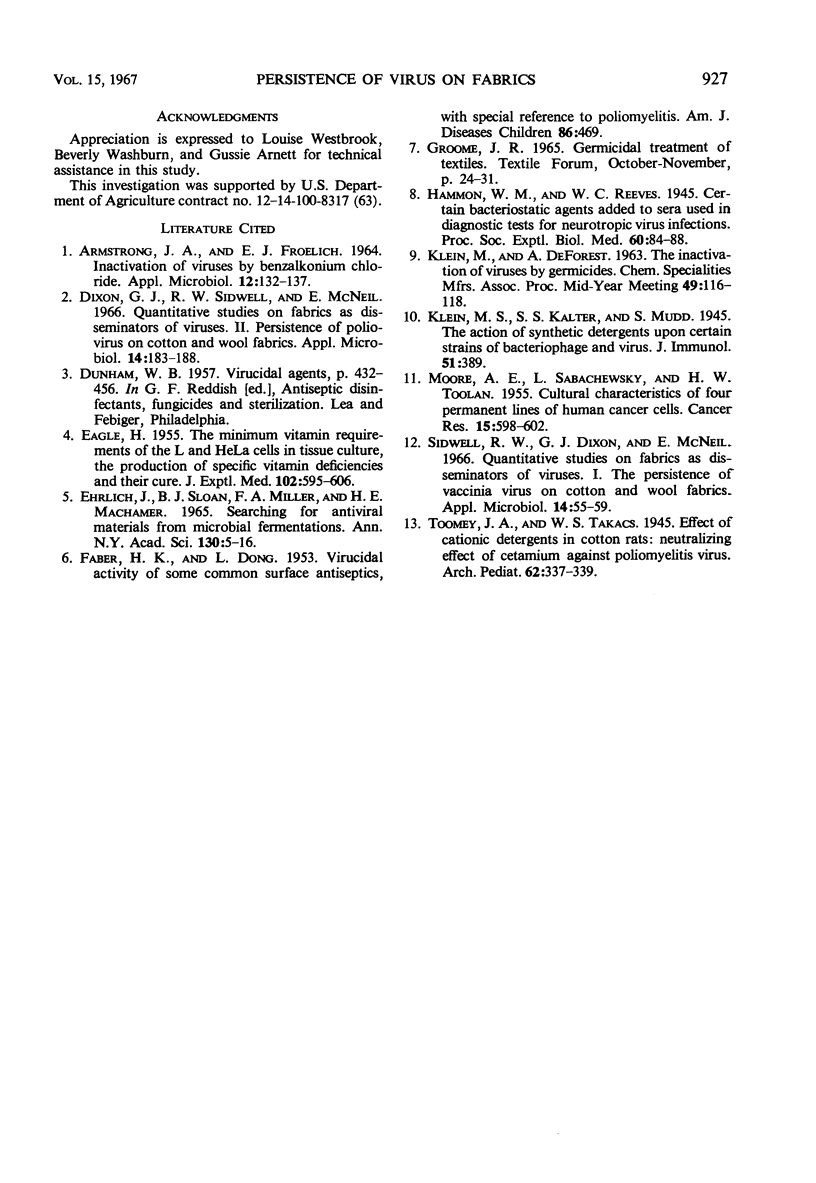
Images in this article
Selected References
These references are in PubMed. This may not be the complete list of references from this article.
- Armstrong J. A., Froelich E. J. Inactivation of viruses by benzalkonium chloride. Appl Microbiol. 1964 Mar;12(2):132–137. doi: 10.1128/am.12.2.132-137.1964. [DOI] [PMC free article] [PubMed] [Google Scholar]
- Dixon G. J., Sidwell R. W., McNeil E. Quantitative studies on fabrics as disseminators of viruses. II. Persistence of poliomyelitis virus on cotton and wool fabrics. Appl Microbiol. 1966 Mar;14(2):183–188. doi: 10.1128/am.14.2.183-188.1966. [DOI] [PMC free article] [PubMed] [Google Scholar]
- EAGLE H. The minimum vitamin requirements of the L and HeLa cells in tissue culture, the production of specific vitamin deficiencies, and their cure. J Exp Med. 1955 Nov 1;102(5):595–600. doi: 10.1084/jem.102.5.595. [DOI] [PMC free article] [PubMed] [Google Scholar]
- Ehrlich J., Sloan B. J., Miller F. A., Machamer H. E. Searching for antiviral materials from microbial fermentations. Ann N Y Acad Sci. 1965 Jul 30;130(1):5–16. doi: 10.1111/j.1749-6632.1965.tb12533.x. [DOI] [PubMed] [Google Scholar]
- FABER H. K., DONG L. Virucidal activity of some common surface antiseptics, with special reference to poliomyelitis. AMA Am J Dis Child. 1953 Oct;86(4):469–472. [PubMed] [Google Scholar]
- MOORE A. E., SABACHEWSKY L., TOOLAN H. W. Culture characteristics of four permanent lines of human cancer cells. Cancer Res. 1955 Oct;15(9):598–602. [PubMed] [Google Scholar]
- Sidwell R. W., Dixon G. J., McNeil E. Quantitative studies on fabrics as disseminators of viruses. I. Persistence of vaccinia virus on cotton and wool fabrics. Appl Microbiol. 1966 Jan;14(1):55–59. doi: 10.1128/am.14.1.55-59.1966. [DOI] [PMC free article] [PubMed] [Google Scholar]





